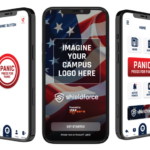Most of us would like to forget the Winter of 2011, which brought a record number of significant snow events, accumulation and ice problems not seen for decades on campuses. We would be wise to remember the valuable lessons that could help mitigate many of the problems likely to surface again in the future.
Many campuses, especially in the South, found themselves without the proper equipment to deal with snow accumulation and ice. Others did not have plans in place to help administrators make critical decisions regarding campus closures and class cancellations. Many institutional departments realized that the essential functions listed in their Continuity of Operations Plans (COOP) were based on other critical incidents (like H1N1) but didn’t cover winter weather.
Campuses should consider developing detailed checklists based on the National Weather Service (NWS) winter warning levels and develop criteria regarding base closure and cancellation procedures.
Preparing for a winter weather event should become routine, but this requires a consistent and logical approach from one storm to the next. Using checklists with triggers based upon NWS advisories helps to ensure that consistency.
When the NWS issues a winter weather advisory, certain tasks should be completed. Logically, as the forecasts increase in severity, the tasks and preparations should follow suit. Such checklists should not only apply to a single department, but consider all departments that may have a role in the preparation, response and recovery.
Georgia Tech’s Winter Weather Checklist
- Post information about the weather on FB and Twitter and the Home Page (Communications & Marketing)
- Stand by to issue any information regarding closings or delays at the Institute (Communications & Marketing)
- Schedule staffing and arrange billeting for personnel during this period (Communications & Marketing)
- Schedule staffing and arrange billeting for personnel during this period (Facilities)
- Review salting & ice removal (Facilites)
- Prepare salt vehicles, ensure sufficient salt is on hand (Facilities)
- Ensure sufficient fuel is on hand for Institue heating (Facilites)
- Schedule staffing and arrange billeting for personnel during this period (Parking & Transportation)
- Prepare vehicles & equipment (Parking & Transportation)
- Ensure adequate food is on hand for the forecast period (Dining Services)
- Schedule staffing and arrange billeting for personnel during the period (Dining Services)
The NWS may issue a variety of communications (warnings, watches and advisories) during the winter season that follow a logical progression based upon their forecasts. Typically, as the event approaches, the communications may become more significant:
Winter Weather Outlook -> Winter Storm Watch -> Winter Storm Warning
The Local Weather Forecast Office (WFO) will help determine the criteria for each message. For instance, in the South, a forecast of more than two inches of snow may trigger a winter storm warning, while only triggering a winter weather advisory in an area further north.
Develop Criteria for Closures and Cancellations
Winter weather conditions are seldom clear enough to make immediate decisions on campus closures and/or class cancellations. Having a list of criteria to help administrators decide on these difficult, but important, issues will not only help them make the right decision, but help them do so in a timely manner.
Criteria will differ depending on the campus, location and resources available. Each campus should develop its criteria and update it after each winter event.
For example, if campus road conditions are decent but both the surrounding city streets are impassable and public transpiration is not running, you could expect issues with off campus commuters and faculty/staff getting to campus. Another example: without public transportation, you can expect issues with dining hall staff.
Prepare for the Unexpected at Inopportune Times
The decision to close campus or cancel classes is never an easy decision. Furthermore, there are always other factors that come into play that make the decision even more difficult. Imagine an ice storm occurring the night before the last day of final exams; if the exams are delayed, what would happen to grades and even graduation?
Communicating before and during a winter weather storm is nearly as critical as the campus closure and class cancellation decisions. Using various internal and external outlets too is extremely important.













